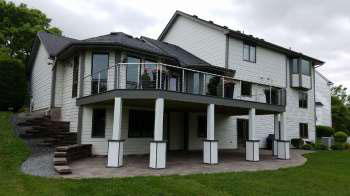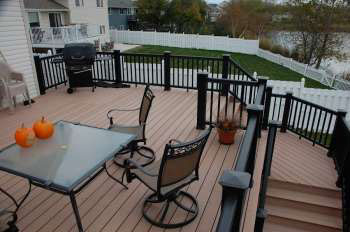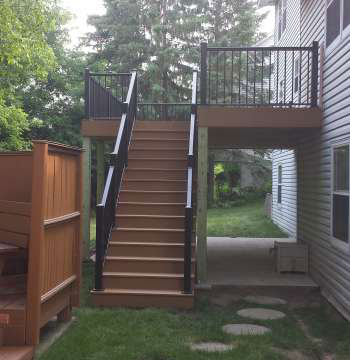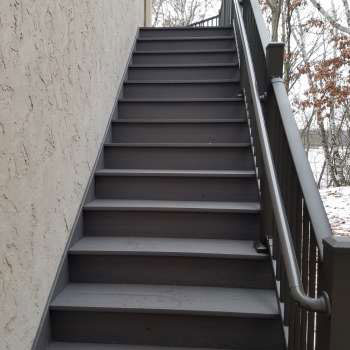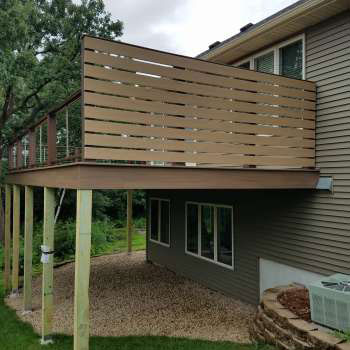WOOD, TREATED AND COMPOSITE DECKS
Decks are seen as a space to sit and relax on during the warm summer days or cool fall nights. A new deck is also an area where people can congregate and enjoy each other’s company, whether it be around a wooden deck with patio table filled with food that was made on the grill, or a composite deck with fire table telling stories of the past or making memories for the future. No matter what, most can agree that a deck certainly brings personal value to a home. But the physical value a deck can bring is definitely worth having one.
Whether you currently have a deck or would like to add one to your home, doing so is one of the most cost-effective ways of not only creating added square footage to your home, but increasing the value of your property as well. It creates curb appeal, another point of entry to the house and an area to gather. And when it comes time to sell, it will appeal to both older and younger generations, which in turn may reduce the amount of time it would take to sell your home.
But what kind of deck should I have? What would make most sense for me? Well, for most it depends on budget and maintenance. Decks come in a variety of materials: composite, cedar, pressure-treated wood, and hardwood. Composite decks are seen as low-maintenance and really only require maybe a washing once or twice a year. It is made of recycled material and is resistant to weathering, rot and insect damage and is more durable than wood. If you are looking for an eco-friendly choice, this would be the way to go. With high quality material, generally a composite decking can last up to 25+ years. But with the high quality usually comes a higher price upfront.

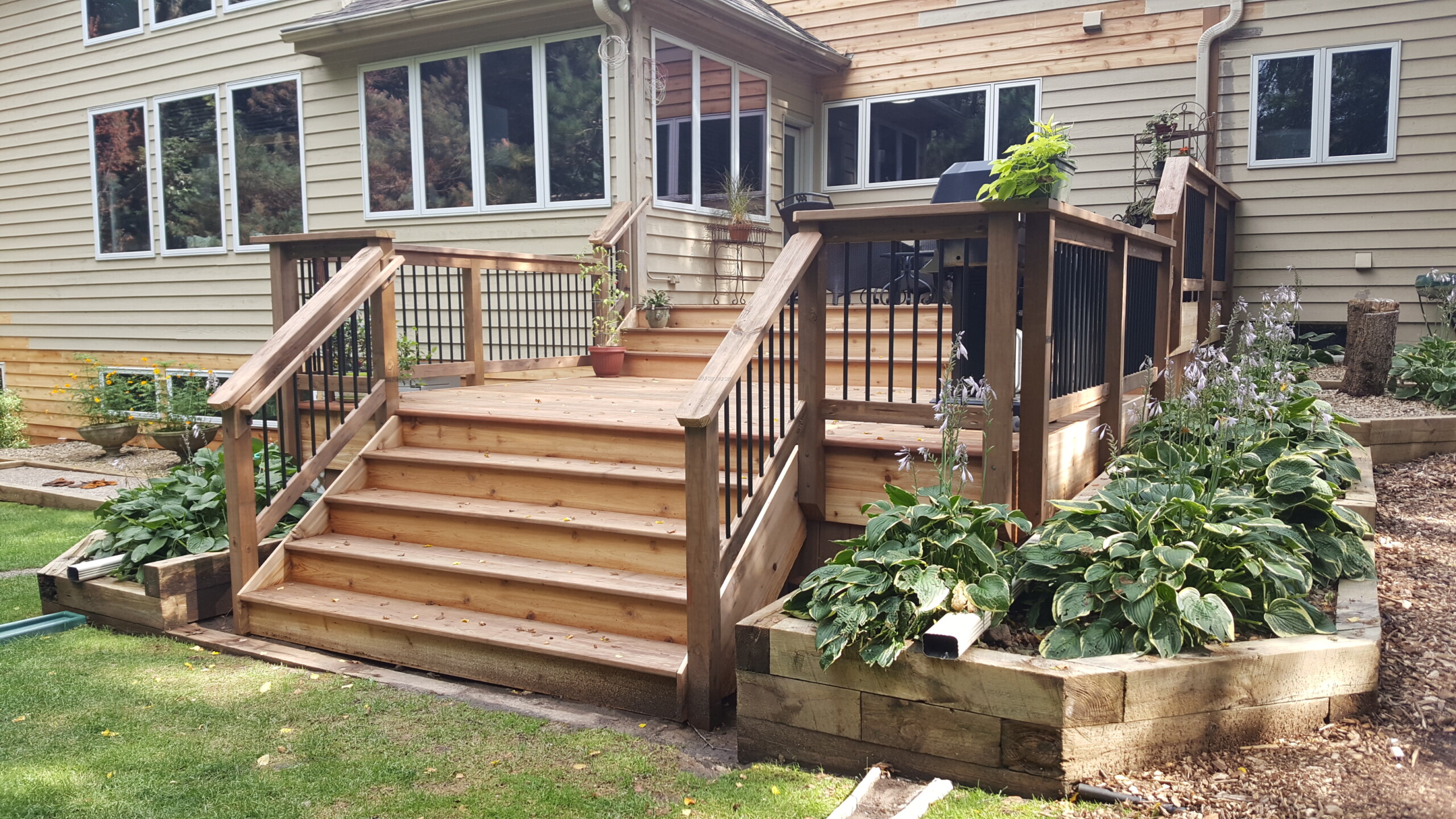
Cedar decks are a beautiful wood decks that have natural resistance to decay, rot and insect damage. A cedar deck would require some maintenance but still minimal. You can stain it for added color and protection, or if left natural, it will weather it into a grey tone. When maintained annually and if in the right environment, you can get about 15-20+ years out of a cedar deck. The cost for a cedar deck is typically cheaper than composite but more expensive than other wood options due to its minimal maintenance.
Pressure-treated wood is wood that has been treated with chemicals to protect it from rot, prevent mold and mildew, deter insects, and increase its durability. The most common types of pressure-treated wood are brown-treated and green-treated wood. The only difference between the two is that brown-treated wood is already dyed brown to give it a darker appearance. Green-treated remains its natural color. Because of this, brown-treated wood tends to be a little more expensive. Both can be stained as long as you let it weather for a couple of months. If you are looking for an affordable, long-lasting deck, pressure-treated wood may be the way to go.
Hardwood decks include woods such as Ipe, Mahogany or Tigerwood. These woods live up to their name as they are all hard and dense. Due to their density, they will last much longer than softwood and resist bugs and decay. Unless you want the color of these woods to naturally fade, you should at least oil them 1-2 times a year. Aside from oiling, hardwood decking is very durable and low maintenance with a life expectancy of 30-50+ years depending on what you choose. Because these hardwoods are more exotic, they are quite expensive compared to the alternative choices.
Once you have figured out what kind of deck you are after, think about the kind of railing you would like: wood, aluminum, cable, glass, hog panels, etc. Would you want any certain features like lighting, flowerpots, privacy fence, benches? Staircase or no staircase? So many options are available to personalize this space for you. If you are feeling overwhelmed by the process or possible budget, we are here to help guide you and give you the best options for what you may be after. Whether it be an old deck that needs a makeover or a new, we’d love to help create and build your vision deck.

